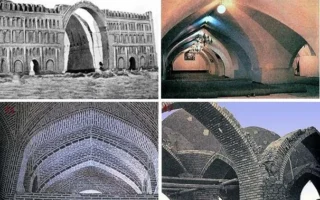Introduction:
Architecture, beyond being a fusion of science and art, is a language in itself. Describing architecture entails translating this language into words that capture its essence, functionality, and aesthetic appeal. Whether you’re an aspiring architect, a student, a critic, or simply an enthusiast, mastering the skill of describing architecture empowers you to appreciate, analyze, and communicate its significance effectively. In this guide, we embark on a journey to unravel the intricacies of architectural description, from understanding its vocabulary to employing evocative language that brings structures to life.
Understanding Architectural Vocabulary:
1.Foundations of Architectural Terminology:
Architectural Elements: Explore the fundamental components of architecture, such as columns, beams, arches, and facades. Understand their roles in supporting structures and conveying stylistic motifs.
Spatial Concepts: Delve into spatial terminology, including volume, scale, proportion, and circulation. Learn how architects manipulate space to create dynamic environments.
2.Styles and Movements:
Historical Context: Trace the evolution of architectural styles through different epochs, from ancient civilizations to contemporary trends. Understand the cultural, social, and technological influences shaping architectural movements.
Iconic Examples: Examine iconic architectural landmarks representing diverse styles, such as Gothic cathedrals, Renaissance palaces, and modernist skyscrapers. Analyze their design principles and symbolic significance.
Crafting Vivid Descriptions:
3.Observational Skills:
The Art of Observation: Cultivate keen observational skills to perceive architectural details, textures, and spatial relationships. Train your eye to appreciate subtle nuances in form, materiality, and craftsmanship.
Sketching and Photography: Utilize sketching and photography as tools for documenting and analyzing architecture. Capture different perspectives, lighting conditions, and atmospheric qualities to enrich your descriptions.
4.Language and Expression:
Descriptive Techniques: Experiment with descriptive techniques, such as metaphor, simile, and personification, to evoke sensory experiences and emotional responses. Use vivid imagery to convey the tactile qualities of materials, the play of light and shadow, and the rhythm of spatial sequences.
Contextual Analysis: Contextualize architectural descriptions within broader narratives, encompassing historical, cultural, and socio-economic contexts. Consider how architecture reflects and shapes human experiences, identities, and aspirations.
Practical Applications:
5. Architectural Criticism:
Critical Thinking: Develop critical thinking skills to evaluate architectural projects based on criteria such as functionality, sustainability, and cultural relevance. Engage in constructive criticism that fosters dialogue and innovation within the architectural community.
Writing Reviews: Write insightful architectural reviews that assess projects’ strengths, weaknesses, and design intentions. Provide actionable feedback that contributes to the ongoing discourse on architectural practice and theory.
6.Academic Research:
Research Methodologies: Familiarize yourself with research methodologies for studying architectural history, theory, and practice. Conduct archival research, fieldwork, and comparative analysis to deepen your understanding of architectural phenomena.
Thesis Writing: Undertake thesis projects that explore specific topics within architecture, ranging from typological studies to theoretical inquiries. Apply rigorous research methodologies and analytical frameworks to produce original contributions to the field.
Conclusion:
Mastering the art of describing architecture transcends mere verbal description; it involves cultivating a holistic understanding of architectural language, honing observational and descriptive skills, and engaging critically with architectural discourse. Whether you aspire to become an architect, a scholar, or simply an informed observer, the ability to articulate the essence of architecture enriches your experience and appreciation of the built environment. As you embark on your journey, remember that each architectural description is a narrative waiting to be told—a story of creativity, innovation, and human aspiration inscribed in brick, stone, and steel.




